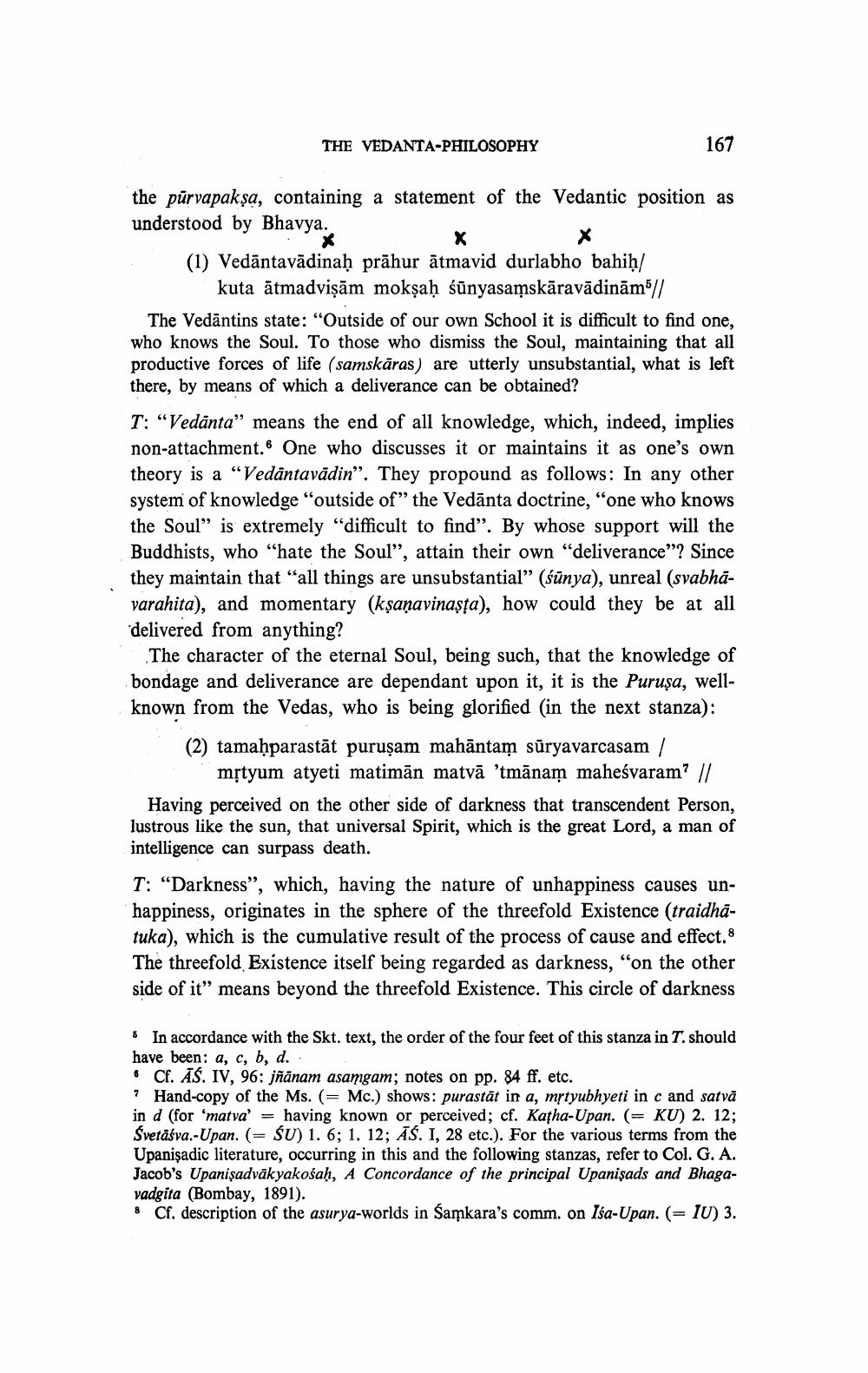________________
THE VEDANTA-PHILOSOPHY
the purvapakṣa, containing a statement of the Vedantic position as understood by Bhavya.
X
X
X
(1) Vedāntavādinaḥ prāhur ātmavid durlabho bahiḥ/ kuta ātmadviṣām mokṣaḥ śūnyasamskāravādinām3//
167
The Vedantins state: "Outside of our own School it is difficult to find one, who knows the Soul. To those who dismiss the Soul, maintaining that all productive forces of life (samskäras) are utterly unsubstantial, what is left there, by means of which a deliverance can be obtained?
T: "Vedanta" means the end of all knowledge, which, indeed, implies non-attachment. One who discusses it or maintains it as one's own theory is a "Vedantavādin". They propound as follows: In any other system of knowledge "outside of" the Vedanta doctrine, "one who knows the Soul" is extremely "difficult to find". By whose support will the Buddhists, who "hate the Soul", attain their own "deliverance"? Since they maintain that "all things are unsubstantial" (śūnya), unreal (svabhāvarahita), and momentary (kṣaṇavinaṣṭa), how could they be at all delivered from anything?
The character of the eternal Soul, being such, that the knowledge of bondage and deliverance are dependant upon it, it is the Purușa, wellknown from the Vedas, who is being glorified (in the next stanza):
(2) tamaḥparastāt puruṣam mahāntam suryavarcasam /
mṛtyum atyeti matiman matvā 'tmānam maheśvaram? // Having perceived on the other side of darkness that transcendent Person, lustrous like the sun, that universal Spirit, which is the great Lord, a man of intelligence can surpass death.
8
T: "Darkness", which, having the nature of unhappiness causes unhappiness, originates in the sphere of the threefold Existence (traidhātuka), which is the cumulative result of the process of cause and effect. The threefold Existence itself being regarded as darkness, "on the other side of it" means beyond the threefold Existence. This circle of darkness
In accordance with the Skt. text, the order of the four feet of this stanza in T. should have been: a, c, b, d.
• Cf. AS. IV, 96: jñānam asamgam; notes on pp. 84 ff. etc.
7 Hand-copy of the Ms. (= Mc.) shows: purastat in a, mrtyubhyeti in c and satvā in d (for 'matva' having known or perceived; cf. Katha-Upan. (= KU) 2. 12; Śvetāśva.-Upan. (= ŚU) 1. 6; 1. 12; AS. I, 28 etc.). For the various terms from the Upanisadic literature, occurring in this and the following stanzas, refer to Col. G. A. Jacob's Upanisadvākyakośaḥ, A Concordance of the principal Upanisads and Bhagavadgita (Bombay, 1891).
Cf. description of the asurya-worlds in Samkara's comm. on Isa-Upan. (= IU) 3.
=




